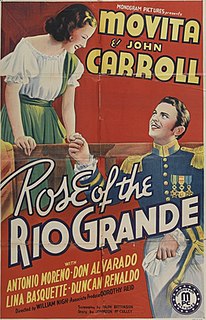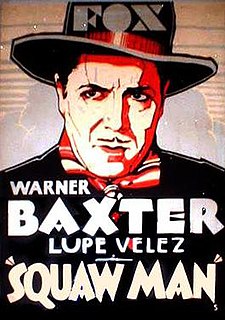 W
WBarbary Coast is a 1935 American historical and drama film directed by Howard Hawks. Shot in black-and-white and set in San Francisco during the Gold Rush, the film combines elements of crime, Western, melodrama and adventure genres, featuring a wide range of actors, from good-guy Joel McCrea to bad-boy Edward G. Robinson, and stars Miriam Hopkins in the leading role as Mary 'Swan' Rutledge. In an early, uncredited appearance, David Niven plays a drunken sailor being thrown out of a bar.
 W
WThe Girl of the Golden West is a 1930 American Pre-Code drama film produced and distributed by First National Pictures, a subsidiary of Warner Bros., directed by John Francis Dillon and starring Broadway actress Ann Harding and James Rennie. Ann Harding's then-husband, Harry Bannister, plays the villain Jack Rance. David Belasco wrote, directed, and produced the original play in 1905 which starred Blanche Bates.
 W
WGold is Where You Find It is a 1938 American romantic drama film that gives a fictionalized account of a true event— an ecological disaster whose effects are still felt in California today. Directed by Michael Curtiz and starring George Brent, Olivia de Havilland, and Claude Rains, with a screenplay by Warren Duff and Robert Buckner based on a story by Clements Ripley, the film is set 30 years after the first California Gold Rush, when hydraulic mining sends floods of muddy sludge into the Sacramento Valley, destroying crops and homes, ruining land and water sources and killing people caught in their path. The film highlights the conflict between the mining companies and the wheat farmers by adding a romance between a mining engineer and the daughter of a prominent farmer. She is herself dedicated to the idea that fruit can be raised in the valley. This Technicolor feature film was released on February 12, 1938 by Warner Bros. Pictures.
 W
WMan from Montreal is a 1939 American western drama film, directed by Christy Cabanne. It stars Richard Arlen, Andy Devine, and Kay Sutton, and was released on December 8, 1939.
 W
WRose of the Rio Grande is a 1938 American western drama film directed by William Nigh and starring Movita Castaneda as Rosita de la Torre.
 W
WThe Squaw Man is an American 1931 pre-Code film directed by Cecil B. DeMille. It was his third time filming the same play, and it was the first version in sound. It stars Warner Baxter in the leading role.
 W
WStand Up and Fight is a 1939 film directed by W.S. Van Dyke and starring Wallace Beery and Robert Taylor. The supporting cast includes Florence Rice, Helen Broderick, Charles Bickford, Barton MacLane, Charley Grapewin, and John Qualen. Playwright Jane Murfin and novelists Harvey Fergusson and James M. Cain shared screenwriting credit.
 W
WThe Trail Beyond is a 1934 Western film directed by Robert N. Bradbury and starring John Wayne, Noah Beery Sr., and Noah Beery Jr. The motion picture was based on the novel The Wolf Hunters by James Oliver Curwood, which was also adapted as a silent film (1926) and a later sound film (1949), both called The Wolf Hunters.
 W
WTrapped in Tia Juana is a 1932 American Pre-Code western directed by Wallace Fox. Duncan Renaldo plays twin brothers separated at birth: West Point graduate Kenneth Holbert and Mexican bandit El Zorro.
 W
WUnion Pacific is a 1939 American Western drama directed by Cecil B. DeMille and starring Barbara Stanwyck and Joel McCrea. Based on the 1936 novel Trouble Shooter by Western fiction author Ernest Haycox, the film is about the building of the eponymous railroad across the American West. Haycox based his novel upon the experiences of a civil engineer, Charles H. Sharman, who worked on the railroad from its start in Omaha, Nebraska, in 1866 up to the golden spike ceremony on May 10, 1869. This was to celebrate the joining of the rails for the First Transcontinental Railroad across the United States connecting the Central Pacific and Union Pacific railroads at Promontory Summit, Utah Territory. In fact, the movie recreated the event using the same 1869 golden spike, on loan from Stanford University.